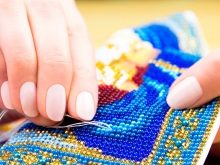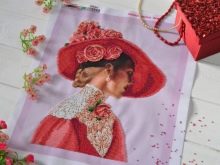All about bead sizes
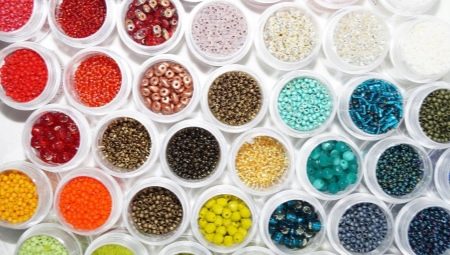
The needlewomen, who are engaged in beading, know how important it is to choose the material for the future masterpiece. The result directly depends on the correct selection of size, shape and color. Usually, craftswomen in their work use beads from Japanese or Czech manufacturers; Chinese products remain just as popular. The types of beads, as well as the features of choosing it by numbers and letters, will be discussed in this article.
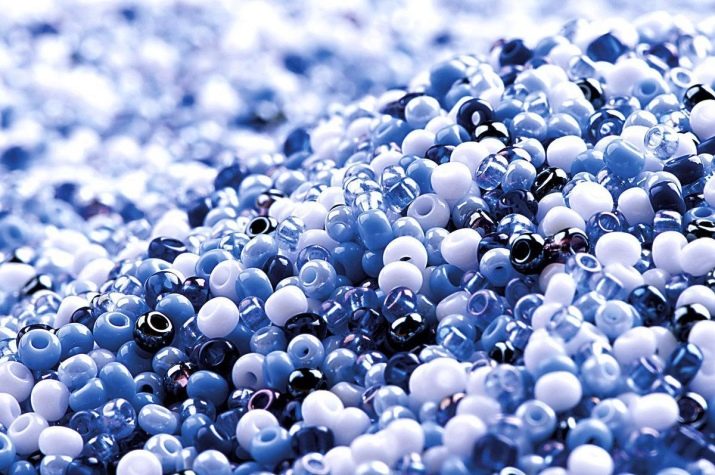
What are they?
Starting to work with beads, inexperienced craftswomen may face the problem of material selection. To achieve the desired result, you need to choose beads of the same shape, size and shade.
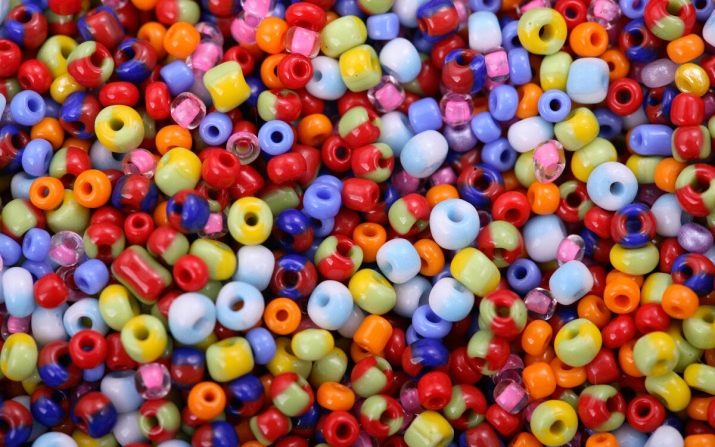
Since ancient times, Bohemia (present-day Czech Republic) has been famous for the production of beads of extraordinary beauty, which overshadowed the products from Murano. They began to make it at a time when Bohemia was part of Austria-Hungary, made in various industries. Each of the industries had its own secrets, thanks to which the enterprises could compete for a long time.
After the closure of most of the European factories, goods from the Czech Republic began to occupy one of the main places.
Later, many varieties ceased to be produced, but they were replaced by innovations in the form of standardization in size, color, and finish. Thanks to this, buyers were able to select the desired option and order it. In the Czech Republic, they now mainly produce large-sized products, for example, 9/0 and 10/0, or even the largest. At the same time, it is not always possible to find small specimens in sufficient quantities.
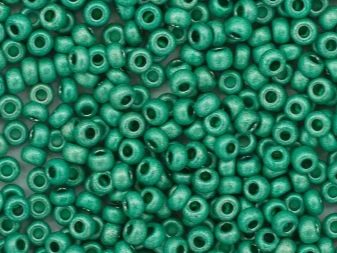
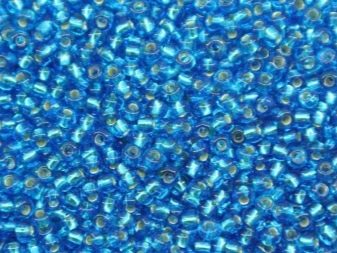
Currently, beads are mainly produced in the Czech Republic, Japan, as well as China, Taiwan, and India. There are also manufactures in Russia. There is still no single scale for determining the size of beads, each manufacturer is guided by its own rules or traditions. Due to this spread, buyers have to take into account all the nuances and additionally consult with suppliers. The most commonly used method is to count the copies within one inch. But if these designations are suitable for goods from Europe, then for Asian counterparts they can be radically different.
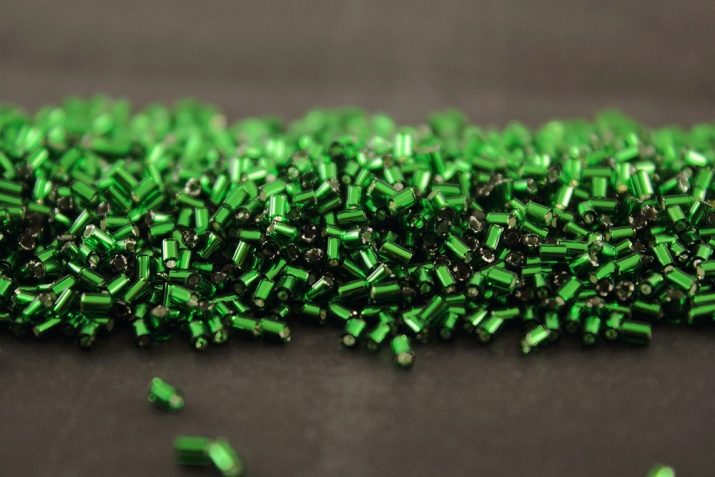
The most accurate indicators are for Czech and Japanese beads. Such products have high strength, resistance to sunlight and moisture, friction, because in their production they use refractory special glass. Czech beads from Preciosa will retain their transparency and color for decades. The optimal ratio of price and quality makes this product the most popular.
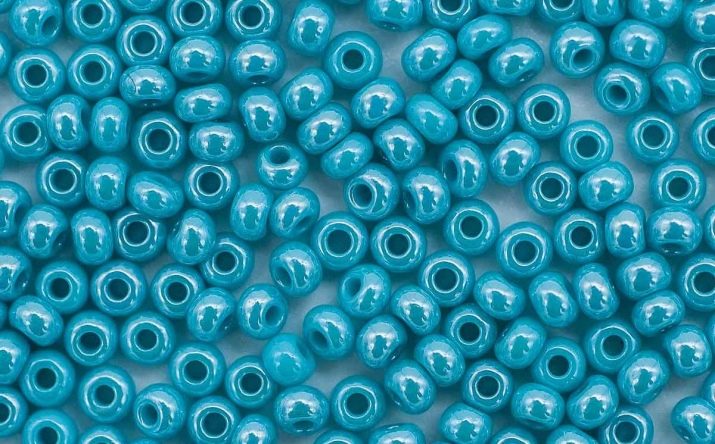
Beads can be small and large, colored and transparent, as well as matte and mother-of-pearl. The highest quality pearls are considered brocade, pearl and gasoline pearls. Gasoline has an iridescent iridescent coating that looks like a gasoline film that has fallen on water. Brocade specimens are made of glass covered with shiny paint inside. Canvases or any decorations from it look very impressive.
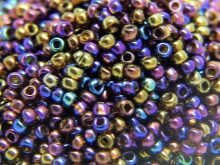
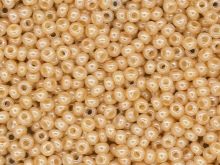
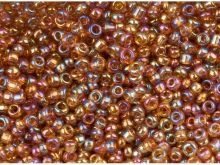
As for finished jewelry and products, it is not recommended to leave them in the sun for a long time.
Products from Taiwan or China are more suitable for novice craftswomen, as well as for those who are not so important to adhere to the exact size of the beads. Although such products are notable for their cheapness, one cannot be completely sure of their quality. When ordering such products via the Internet, it is not always possible to get the desired product, taking into account the shade and size. It is better to purchase goods from China or Taiwan in large quantities in order to sort and use them without buying another batch, which may differ significantly from the one already purchased.
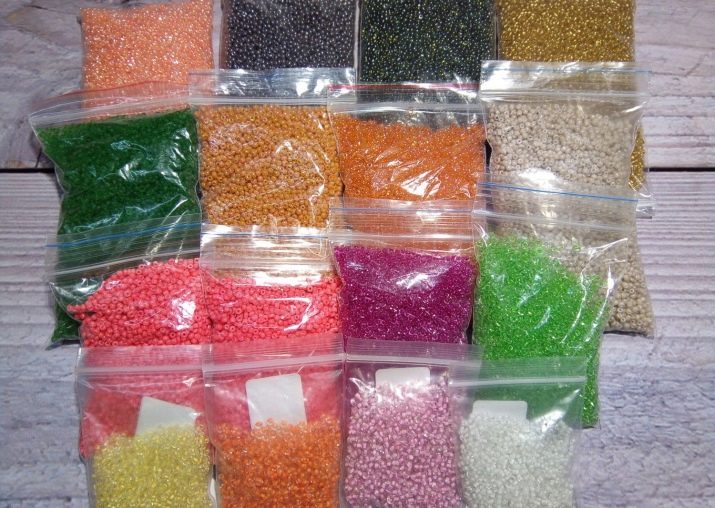
Novice needlewomen often ignore the advice of professional craftsmen, believing that beads can be picked up "by eye". But after the completion of the work, many of them find themselves disappointed, since the appearance of the finished picture differs significantly from the sample.
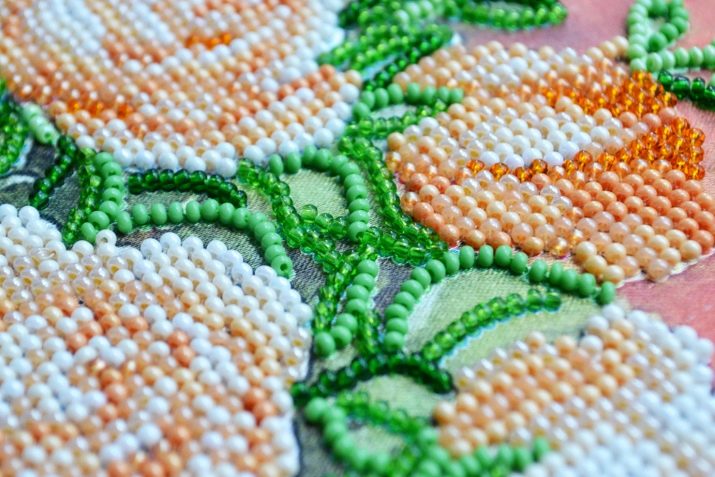
By numbers
Seed beads are usually sold in small or large transparent bags, in bundles or tubes. At home, it is often stored in a variety of containers. Most often, such jars do not have markings indicating the exact parameters of the stored copies.
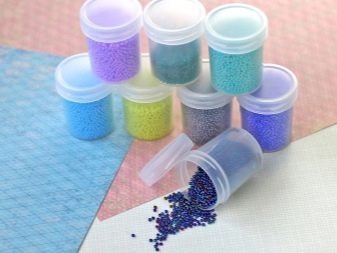
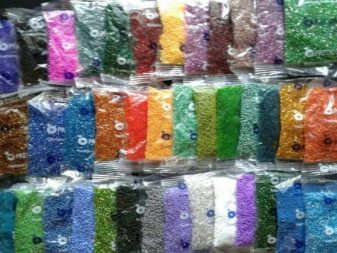
Knowing the size of the beads is very important, especially if they are used for embroidering fancy products. These values must be taken into account when knitting with beads or weaving. In order not to discourage yourself from doing needlework, you need to learn how to choose beads, given their size.
The digital designation will allow you to correctly determine the size. The Czech system is used to determine the size. The number, that is, the number of the beads, indicates the number of pieces arranged in a chain along a length equal to 1 inch. The illustration shows that 1 inch corresponds to the 2.54 cm mark.
For those who prefer to work with large beads, it is better to use options 6/0, 8/0 or 10/0 in their work. Beads numbered 11/0, 12/0 are usually medium in size. Small beads (15/0) are more suitable for those who managed to get their hands on this business, that is, professional embroiderers.
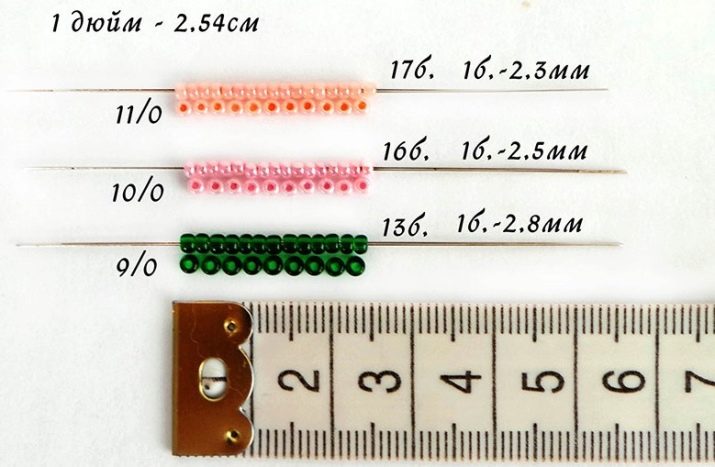
In this case, the size of the beads is descending: from very large beads (6/0) to the smallest (15/0). The most popular size is considered to be 10/0, although each master chooses specimens based on personal preferences and peculiarities of work.
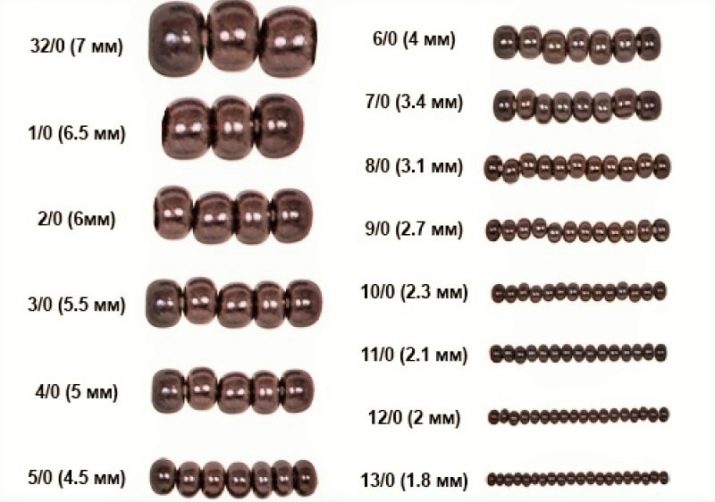
Letter designation
When purchasing beads, you must initially decide on the size of the specimens. So, for some products, tiny glass beads will be needed, while for others, large beads will be used.
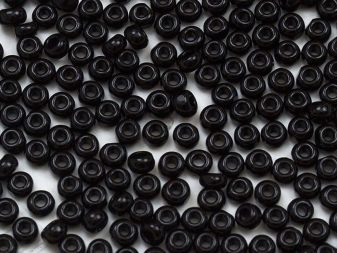
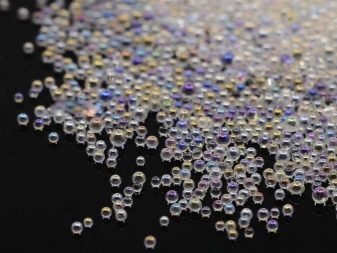
When purchasing goods for needlework on a foreign website or getting acquainted with samples, studying foreign literature, many craftswomen are faced with letter designations.They allow you to choose the size of the beads for each specific case. It is not necessary to thoroughly know a foreign language, it is enough just to find out what these or those names mean.
The letter code will allow you to purchase material of the required size from China, Japan and the Czech Republic.
When choosing, they are guided by the letter designation of products.
- SEED-BEADS. Such an inscription indicates the presence of small-sized beads. Its parameters are from 15/0 to 10/0, that is, from 1.3 mm to 3.3 mm. Rounded beads with a thin hole for the thread are just perfect for embroidery and decorating clothes. Small beads are often preferred by professional embroiderers.
- PONY-BEADS. This option will suit those craftswomen who will use medium beads in their work. Typically, instance parameters range from 10/0 to 8/0. It is presented in the form of more rounded beads with a thin hole. It can be used when creating even layers of beads, for embroidering panels or clothes.
- E-BEADS... This category includes large beads. Such specimens have a size of 2.5 to 4 mm. Considered the most popular option, they are used to create unique jewelry, weaving icons, embroidery.
- CROW-BEADS. For those who will use large copies, products with a similar inscription are suitable. Outwardly, they can be compared to beads.
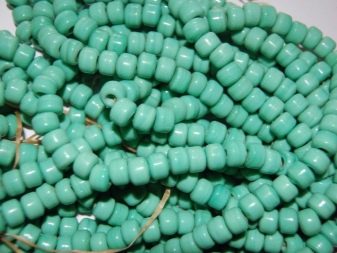
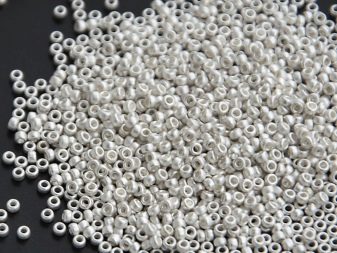
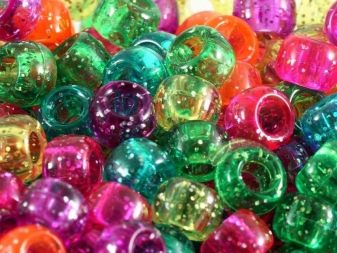
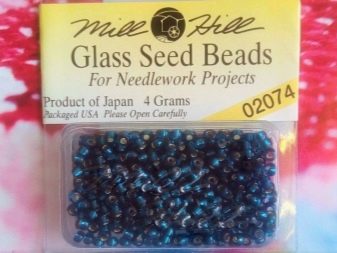
It is generally accepted that beads are specimens exceeding a diameter of 4.5 mm. They can be used to create jewelry, souvenirs, bijouterie, as well as decor for shoes or clothing.
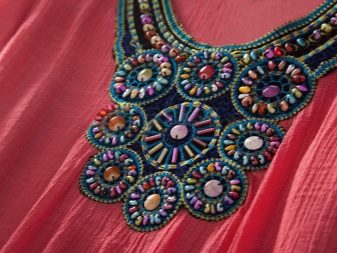
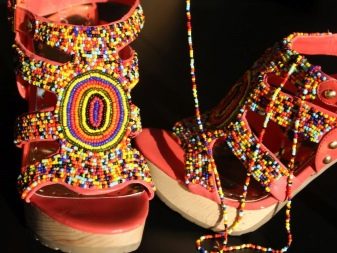
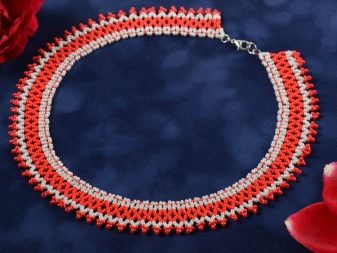
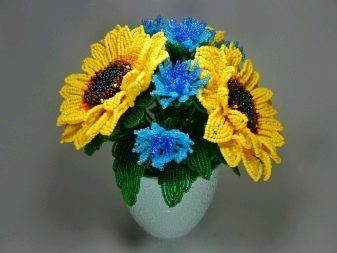
How to determine?
The art of beading began long before the development of technology. During that period, beads were blown out of glass. It was extremely difficult to achieve the same shape and size for each unit, since the copies turned out to be different. Craftsmen had to put in a lot of effort to achieve the desired result. Those who were seriously involved in the creation of works from beads, sometimes had to purchase whole lots of goods, sort out the copies and then sort them by shade and size.
This was extremely inconvenient, so later Bohemian manufacturers came up with a special system that allows you to determine the size of products. There is a special table by which you can easily find out the parameters of products in mm. Thanks to this accepted classification, you can determine the parameters of products yourself. To find out the size of the beads used at home, you need to take a ruler and line the beads along it in the form of a chain. In this case, the segment for the chain should be 2.54 cm, that is, 1 inch.

The copies should be laid out with the hole up.
If you arrange large beads in a row marked 6/0, then 6 beads should fit on the segment. By placing the smallest beads marked 15/0, you will receive 15 pieces. If you place the beads incorrectly, you can make a mistake with the parameters.

How to choose the right one?
For beginners who have just begun to master this kind of creativity as beading, it is sometimes difficult to understand the intricacies of the choice of material.

Professional advice will make this task easier.
- First of all, it is worth figuring out what the beads are made of.... Going to a handicraft store, you can see different options that differ in shape, size, cost. The cheapest are considered plastic specimens, which are more suitable for trial work. These include Chinese or Taiwanese beads. Glass beads are considered to be of the highest quality.
- When choosing products, it is worth taking a closer look at the form of single copies and their size. The package should contain the same beads that do not look different from each other. It is better to postpone the packaging of specimens that are chipped or of an unusual size, as it will be more difficult to work with such material.
- It is advisable to take some of the beads in your hands and rub them between your fingers. After that, there should be no paint marks on the hands: this can happen in the case of poor-quality painted goods.
- For a large purchase, it is better to take some beads, put them in a light cloth and put them in boiling water... If the fabric is not dyed, then the product is of high quality.
- When choosing a product, take into account the size, which is indicated by numbers. The smaller the bead is, the higher its number will be.
- It is important to make sure that the holes on the beads are open and have the same diameter.... It is better to thread the needle through several copies and make sure they are strong.
- Beginners should purchase ready-made sets, which, in addition to diagrams and instructions, also contain beads, matched by shades... Having done trial work and mastered the technique, in the future you can proceed to more complex tasks.
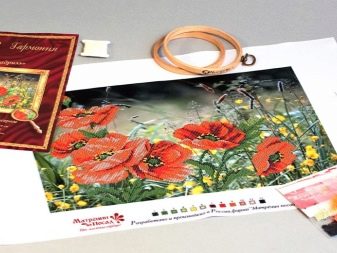
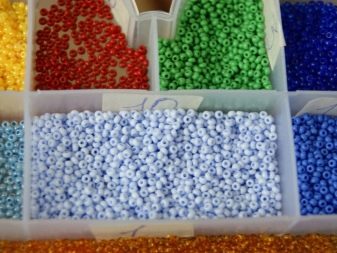
Experienced embroiderers usually use Czech or Japanese beads in their work. The latter is used less frequently due to its high cost. But the quality is also much higher. The main feature of Czech and Japanese goods is considered to be sizing, that is, the adjustment of products in shape and size. The second feature is the durability of products that do not lose their original attractive appearance for ten years or more.
